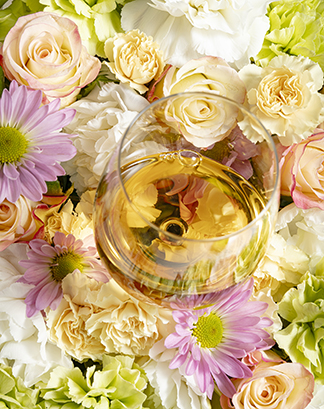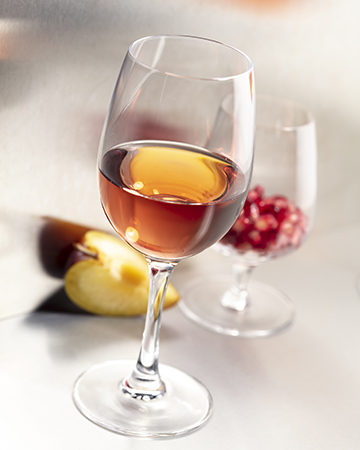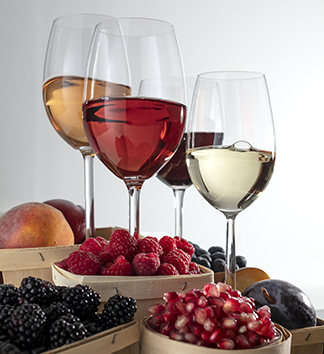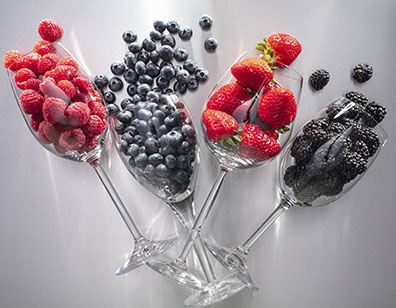Making Blueberry Wine: Tips from the Pros
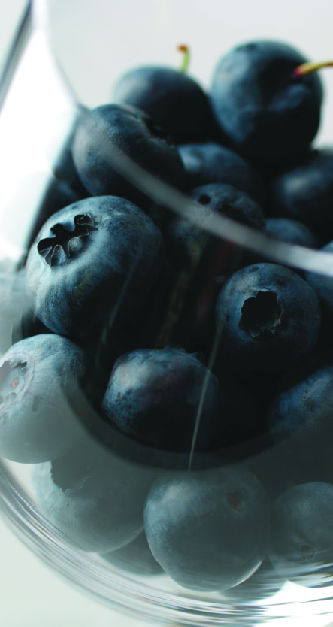
Winemaker: Paul Tamuzza founded Tamuzza Vineyards in 1981 in Hope, New Jersey. Winery operations were recently relocated to Franklinville, New Jersey.
One of the best reasons to make fruit wines is that you can make them from fresh or frozen fruit, so you’re not limited to making wine during the grape harvest in September or October. Also, you can have a wine that’s ready to drink in as few as three months.
One of the nice things about fresh blueberries is that making blueberry wine gives you a chance to test and check out equipment, like your crusher and your press, that has been sitting idle for a year. In a commercial winery, blueberries behave a lot like grapes in that you don’t have to do anything special to process them. Our winery uses highbush blueberries because New Jersey is one of the leaders in growing this variety, but any variety — fresh or frozen — can be used.
At home, there is no need to have a crusher or a press. One, five or even ten gallons of blueberry wine can be made with the simplest of equipment. The fruit can even be crushed using a two-by-four and a large pail.
My preference is for a heavier style of blueberry wine, a wine with a lot of body and good mouthfeel. For a 5-gallon (19-L) batch I would use 15 pounds (6.8 kg) of fresh or frozen blueberries. That is not to say that a good blueberry wine can’t be made using 10 pounds of blueberries. It would just result in a wine that is lighter in style. Blueberries have a rather strong flavor and it stays with the finished wine.
I would start by adding nine pounds of cane sugar to two gallons of hot water. When adding sugar to wine, add a few grams of citric acid. This helps the sugar go into solution, as well as adding to the finish of the wine.
When the sugar has gone into solution and the water has cooled to room temperature, add the sugared water to your crushed blueberries. Add more water, if necessary, to make five gallons (19 L). Your starting gravity should be 1.090. You may have to add more sugar to reach that point.
I feel that people have a memory for taste. You know what an apple should taste like before biting into it. You also know how sweet or sour that apple should be. In finishing the fruit wines that memory is what I strive to satisfy. I believe that blueberry wine should taste like blueberries. To achieve that, a certain sweetness and acid has to be placed into the wine prior to bottling. This is what makes winemaking an art and not merely cookbook science.
Summertime Blueberry Wine
Makes 5 gallons (19 L)
15 lbs. (6.8 kg) blueberries
9 lbs. (4 kg) sugar
2–3 cups grape concentrate (optional — this will add to the wine’s fruitiness)
2.5 tsp. acid blend
2.5 tsp. pectic enzyme
3 tsp. yeast nutrient
0.18 oz. (5 g) potassium metabisulfite (approximately 150 ppm SO2)
2 tsp. potassium sorbate
1 tsp. tannin
Yeast (Lalvin EC1118 or Lalvin 71B-1122)
1. Crush the blueberries.
2. Add the water-sugar mixture and enough water to make 5 gallons (19 L). Add potassium metabisulfite. Cover and let sit for two days.
3. Add sugar, if necessary, to reach specific gravity of 1.090.
4. Add the tannin, acid blend, pectic enzyme and yeast nutrient. Stir everything to blend.
5. Maintain a constant fermentation temperature range between 70–75 °F (21–24 °C).
6. Add yeast to the must.
7. Stir the floating cap of fruit pulp into the fermenting must twice a day during fermentation.
8. Fermentation will continue for approximately 14 to 21 days. Take notice if the bubbles in the airlock have gotten very slow — that is a good sign that the fermentation is coming to an end. Use your hydrometer to monitor and make sure that the fermentation has stopped.
9. Use a mesh bag to extract the juice from the blueberries in the must. Rack the remaining juice to a carboy, leaving the sediment (lees) behind. If possible, move the wine to a cooler place, like a basement, to clear. Rack the wine at least two more times before even thinking about bottling it. Add another Campden tablet to the wine after each racking. The wine should age at least three months.
Winemaker: Scott McCain learned how to make wine from his father, who opened Three Lakes Winery in Three Lakes, Wisconsin in 1972. Scott started in sales and took over winemaking in 1980.
We use frozen blueberries for our wine. This is because fresh blueberries have a short shelf life and the frozen fruit we can use at any time.
The fruit is generally from Washington state, Grade A and cultivated. We buy the berries in 30 pound (14 kg) boxes. Home winemakers could probably get the same type of fruit from their local grocery store, although they might not be able to get the fruit in such large amounts.
We let the frozen berries thaw for 24 hours before crushing. This is a large brick of berries, so it takes a whole day for them to soften. They aren’t totally thawed when the crush starts. Usually, the berries are still a bit crunchy and cold, but not falling apart.
Next, we mix the fruit with 70 °F (21 °C) water during the crush to help them run through the crusher (otherwise, the fruit gets really thick and can gum up the machine). We then mix sugar with the remaining warm water and add this to the must.
The goal is to get a must that is between 65–70° F (18–21 °C) at the start of fermentation. Try to get 21 °Brix in your pre-fermentation mix. The final wine will have an alcohol content of 11–12%.
How much fruit to add in the crush is really a question of taste. Less fruit means a subtler, light wine. More fruit means more intense flavor. It’s a question of what you like and it may take a few batches to find out what you prefer. Also, most of the Brix is coming from the sugar that you added to the water, not from the fruit. So adding more or less fruit will not impact the alcohol content much.
We add the yeast nutrient called Superfood. Home winemakers doing a 5-gallon (19-L) batch can use one teaspoon of this nutrient. We also add pectic enzyme, which breaks down the pectin in the fruit. This helps the wine clear when it is done fermenting. Home winemakers only need to add a little of this enzyme — probably no more than a few drops if you get it in liquid form. More likely, though, you’ll find it as a powder. Make sure you follow the instructions.
We have found the Montrachet strain of wine yeast works best and that blueberry wine is best enjoyed when young. It really doesn’t benefit from bottle aging.


